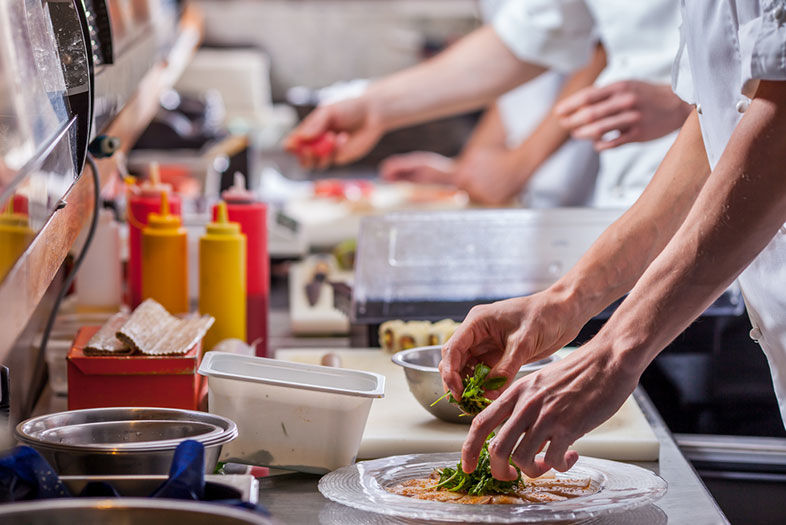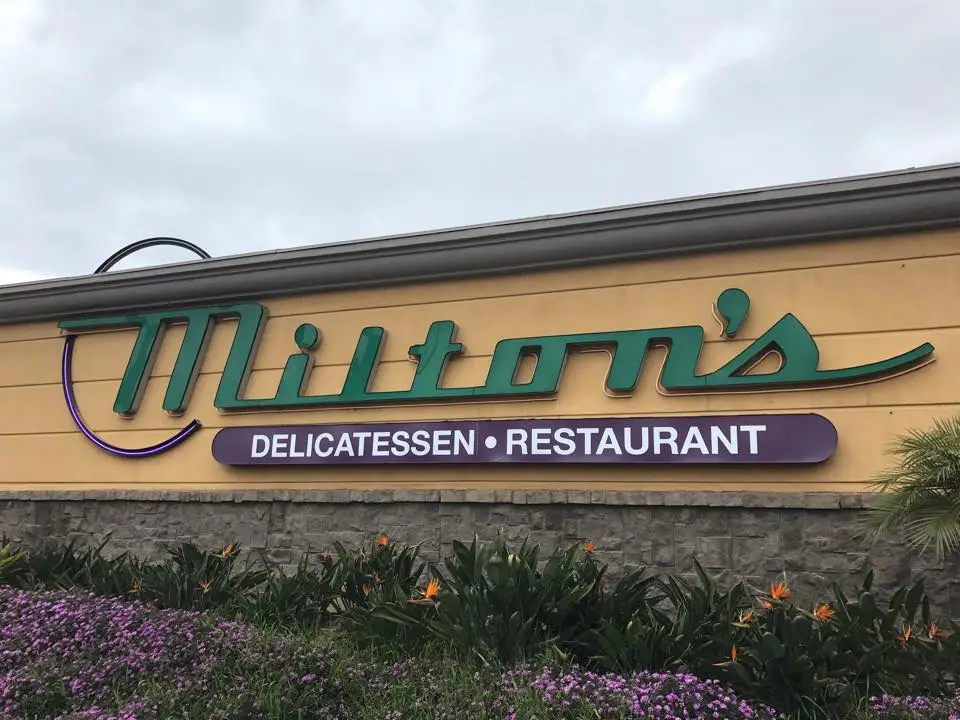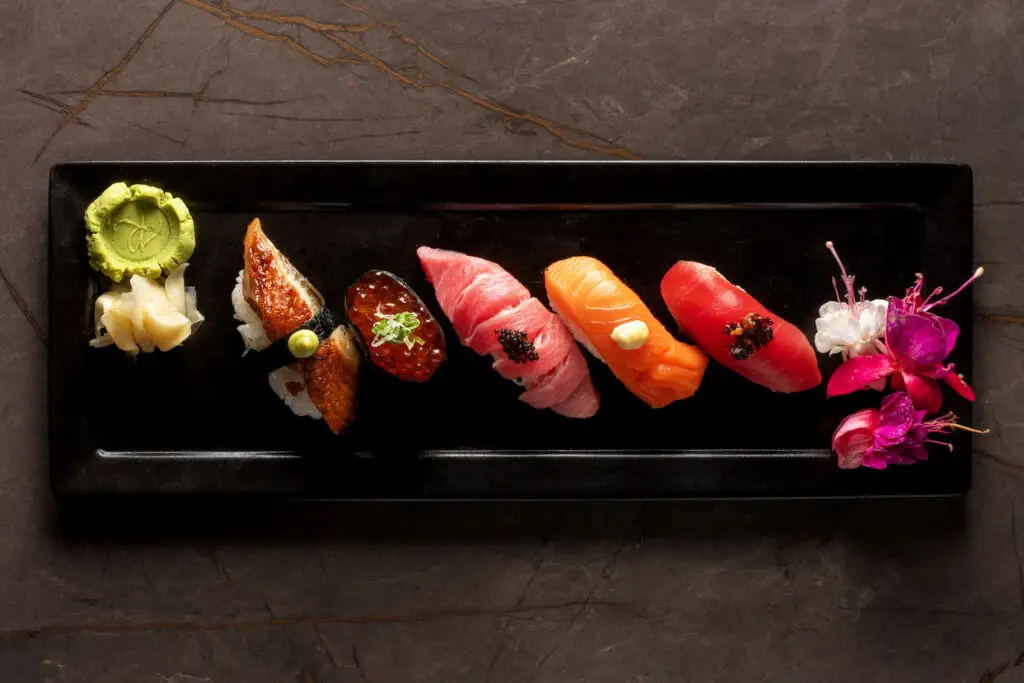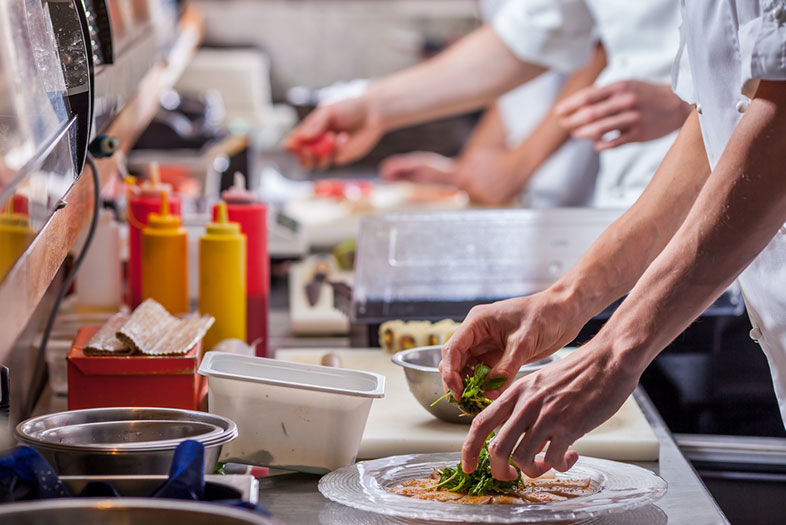You might’ve noticed something new about San Diego restaurants lately. Not a fancy new food thing.
It’s a surcharge. What the…? Stand up and turn over the table. Question a server’s heritage. Dine and ditch. Riot.
Groups like Cohn Restaurant Group, Whisknladle/Prepkitchen, Sammy’s Woodfired Pizza, George’s at the Cove, Bali Hai, etc. are putting the surcharge on your bill.
Here’s what you need to know. Surcharges look ugly. They look unfair. You may feel like you’re being swindled.
Here’s what else you need to know. Surcharges are not ugly. They’re not unfair. You’re not being swindled.
Cut local restaurateurs a break, at least for now. Pay the small cost without public spectacle or even an antagonistic sigh. Because the raise in minimum wage is the biggest challenge the restaurant industry has faced in decades. They’re struggling. Paying the increase and staying in business is no small feat. One local restaurateur told me it’s going to increase his operating costs by a couple hundred thousand dollars.
First, let’s get this out of the way. I haven’t heard any restaurateurs argue against minimum wage increasing. I’m not arguing against it. Everyone should make a living wage. This isn’t about that. This is about the fact that the government of California failed to count tips as earnings. And that, which seems illogical bordering on lunacy or criminality, is what is killing restaurants.
If a restaurant server is already making $20 an hour in tips, California’s impending $15 minimum wage will make the restaurateur pay that server $5 more per hour. The server at $20 an hour does not need the money nearly as bad as the non-tipped employees in the kitchen. That’s the complaint.
In this excellent article in Thrillist, writer Kevin Alexander jots down the math. “If you have 10 hourly employees working eight-hour shifts, five days a week and you raise the wages a dollar an hour, that comes out to a nearly $20K increase on the year,” he explains.
Only California’s isn’t going up a dollar. In 2014, it was $8. Currently it’s $10.50. By 2021, it will be $15. That’s a $7 increase in eight years.
The kicker? That doesn’t even take into consideration workers compensation and other expenses that also go up with payroll.
After over a decade covering the restaurant industry, I’ve found most restaurateurs aren’t money-grubbing bastards who get their capitalist jollies by gouging diners. Most of them are good people. Sure, a handful of the big guys with busy bars are making great money, but most of them are not making millions. Or even hundreds of thousands of dollars. For most independent restaurants, it’s a daily struggle to hold on. Profit margins in the restaurant industry are laughably small. Restaurateurs dream of setting the kitchen on fire and collecting insurance checks.
So how do they absorb this new cost without laying off employees, cutting back hours, or closing the doors?
They could pass this new cost onto you, like some restaurants do with a 20-percent service charge. That would actually be reasonable. Hotels and rental cars already do this. But most aren’t doing that. Yet. For now, they’re asking you to pay a small portion, usually 3-4 percent, until they get a chance to see how the steep hike (85 percent increase over eight years) affects their ability to stay in business.
Giant chains will have no problem absorbing this minimum wage increase. Cheesecake Factory probably won’t hit you with a surcharge, because they sneeze money. The ones adding the surcharge are local restaurant groups who have less financial largesse. Those are the ones who are asking you to pay a small surcharge during this transition.
The city attorney is looking into the legality of surcharges. She’s gotten complaints from some of you. That’s understandable, since no one’s explained it very well. What the attorney is looking into, however, is not the legality of a surcharge. Surcharges are legal. She’s looking into the language restaurants are using to explain the surcharges (San Francisco restaurants got in trouble a few years back by saying a surcharge was going to employee health care, when in fact not all of it was). So, restaurants, be careful how you explain it. Or don’t explain it at all.
Ideally, a more elegant solution will arise. Maybe American diners will get hip to the real cost of running a restaurant—food, labor, real estate, and taxes—and gladly pay more. That’s unlikely, because Americans historically are the cheapest country in the world when it comes to food. On a percentage-of-income basis, Americans spend less on food than any other country in the world. The world.
For now, please just politely pay the surcharge. Or stay home and cook. After all, the cost of groceries actually went down in 2016.
Maybe we’ll lose a bunch of restaurants. There’s already a glut. So maybe the minimum wage increase is a healthy catalyst for thinning the herd.
Maybe we’ll see a massive push toward restaurant automation (iPads, self-pour beer, burger-making machines). Which would mean servers and restaurant employees are losing jobs.
But for now, please just politely pay the surcharge. Or stay home and cook. After all, the cost of groceries actually went down in 2016.
I recently read an article in which an economic analyst said, essentially, if a restaurant goes out of business because of California’s minimum wage increase, they were probably real close to going out of business anyway.
The expert is probably right, because here’s a news flash: “almost out of business” is standard restaurant operating procedure. The restaurant industry has one of the most laughably small profit margins in the American business market (between 1.8 and 6 percent, on average). Owners open bistros out of passion, in spite of the massive, illuminated, blinking, economic red flags.
Restaurants contribute a ton to a city’s culture. Can you or I accept a 3-4 percent surcharge to “subsidize” their continued success while they figure this all out? I think we can. Maybe we should start looking at restaurants as arts programs.
And McDonald’s isn’t going to hit you with a surcharge. You’re getting these surcharges at the finest restaurants in San Diego, where you’re paying $8-$14 for a cocktail. If you’ll pay that much for a drink, you have likely found yourself at a comfortable economic position in life. Congratulations. Then you’re probably OK with paying a small surcharge to ensure the restaurateur can pay the people who cooked and served your meal and cleaned up after it—right?
Sure, it’s restaurant owners’ responsibility to pay their employees, not yours.
In my opinion, the government should count tips as wages (the cruelest irony is that the government taxes a restaurateur on their employees’ tips, but won’t let the restaurateur count them as wages). The federal “tip credit” has been fairly criticized.
But we all pay with credit cards these days. Shouldn’t this be pretty simple math? Couldn’t we count up an employee’s tips at the end of a shift, and make sure they at least made $15 an hour? If they didn’t, the restaurateur pays the difference? How complicated is that? And if a tip credit isn’t the solution, I’m sure we have enough smart brains in the industry and government to figure out a more eloquent decision.
As the U-T’s Lori Weisberg pointed out, some restaurants like Burger Lounge are investing money into streamlining their business. That’s noble and good, and I hope it works and they can teach other restaurant operators how they pulled it off.
There are other costs that are killing your restaurants. Namely, rent, labor, and taxes. Real estate in San Diego? It’s kind of high. Labor, well it’s doubling. Taxes also hurt.
Here’s what’s going to happen. A lot of mom and pop restaurants will likely close. Restaurant owners will cut employee hours. They’ll replace employees with machines (the inventor of the burger-making machine said, unequivocally, his machine is intended to replace workers). IPads will be our servers. You’re going to see a lot more “counter service” restaurants (order at a counter, pick it up, no servers). And we will see a Great Chain-ification of America’s restaurants landscape.
So, please, for now, gladly pay that service charge. And prep yourself for a much larger, and very reasonable, 18 percent “service charge” down the road—which would get rid of the archaic tipping process altogether.

PARTNER CONTENT
Why Restaurants Are Adding a Surcharge, and Why Diners Should Gladly Pay It

















